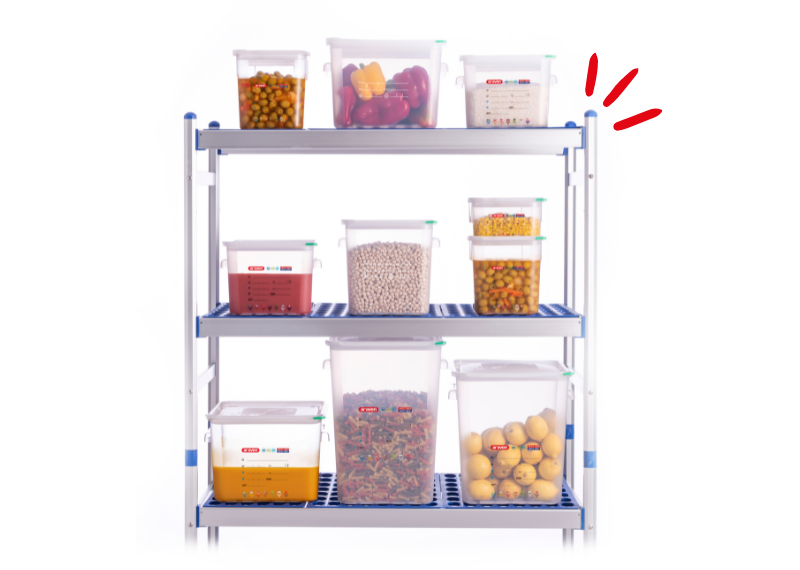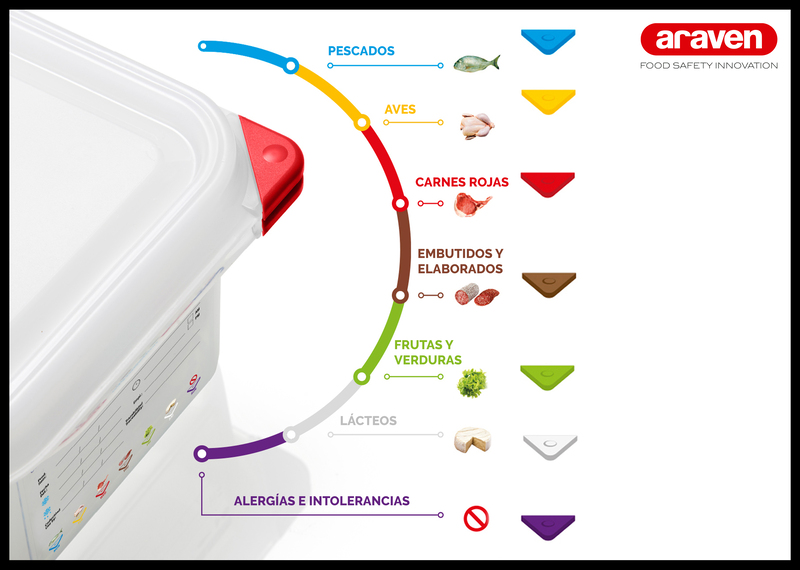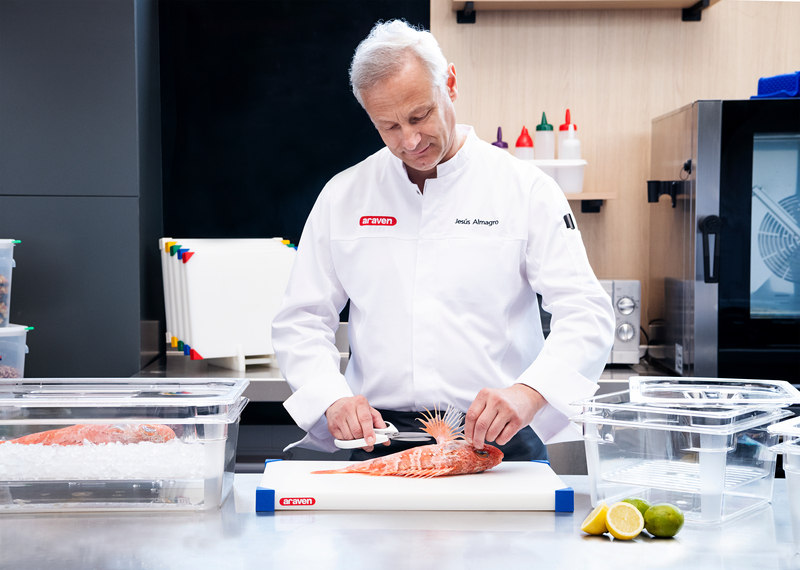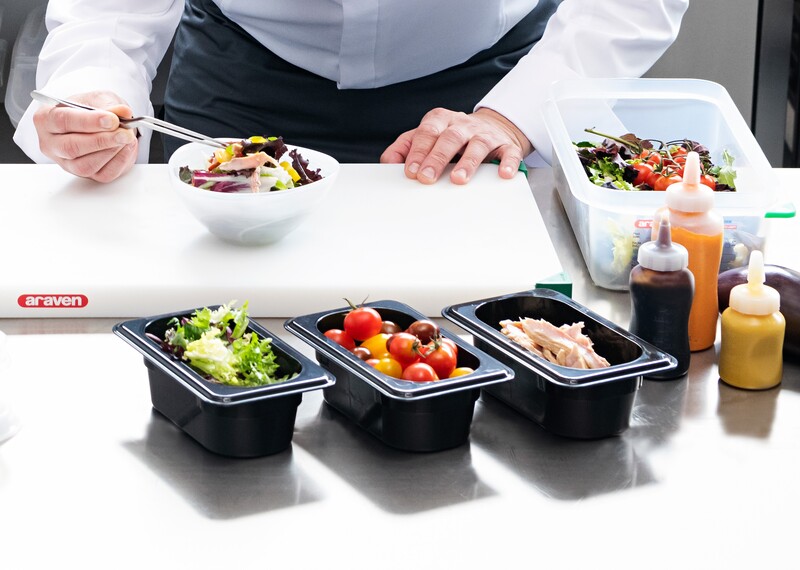When it comes to professional food storage, there are a wide range of different container options on the market. What sets them apart? Everything from material and capacity to size and shape.
In today’s post we compare square containers with containers in Gastronorm sizes. Know when to choose one or the other to store food in your restaurant? We’ve got all the info you need:
1. Container size
The first question we have to deal with is whether the container needs to be complaint with any standardised Gastronorm size (EN 631-1) in the work process: transport trolleys, cold storage, processing/handling tables, mise en place… In this case the answer is obvious, but what about when the GN size isn’t the determining factor?
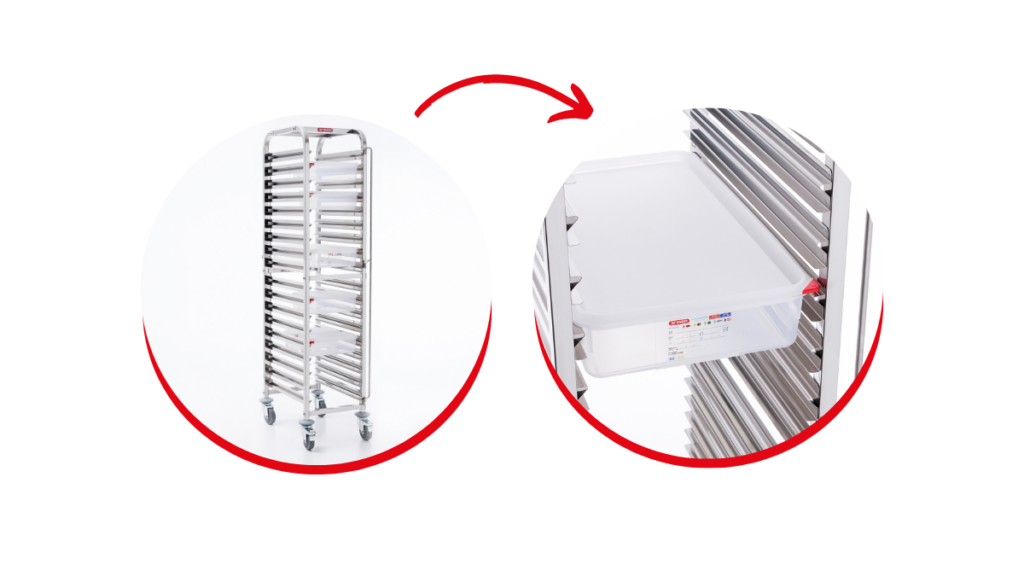
2. Storage according to food type
If the food container doesn’t need to comply with Gastronorm sizes, you should base your decision on the type of food you need to store. But before we go on, let’s take a moment to explain the differences between storing food horizontally or vertically. We recommend using Gastronorm airtight containers for horizontal storage because the containers aren’t as high and the food is stored over a large surface area. On the other hand, vertical storage is better with square containers, which are taller and have a smaller base. Vertical storage is recommended for foods that won’t spoil or be damaged by the weight of the food itself, for example, dried foods like pulses, pasta, etc.
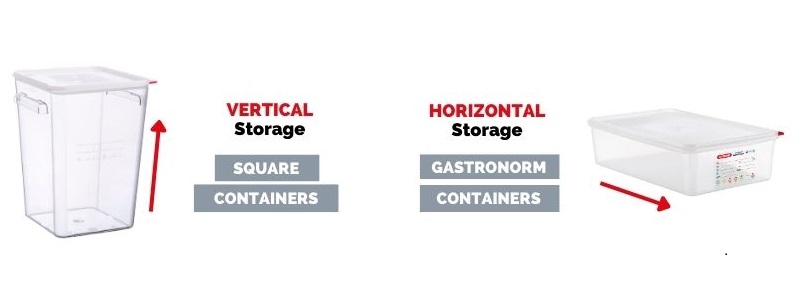
Dry foods
Square containers are recommended for storing and transporting dry foods in bulk. It’s a more compact and easier-to-manage format even when working with large amounts of food, and its square shape delivers enhanced stability during handling.
To correctly store dry products (pulses, pasta, rice, etc.), transfer them to a square container after the original packaging has been opened, labelling the container with the original information (product brand, batch number, opening date and best-before date) to ensure traceability.
Airtight containers are the recommended solution for keeping non-perishable foods sensitive to oxidation, humidity or loss of flavour (snacks, spices, dehydrated foods, nuts, cookies, etc.) from spoiling.
Proteins (meat and fish)
A horizontal rather than vertical conservation solution is required for two main reasons:
- To keep the exudatethat the food on top releases from falling onto the food below and to have a separation system (perforated grid or tray) on the bottom of the container.
- Horizontal storage keeps food at the bottom of the container from being damaged from the weightof the food on top, which doesn’t happen with square containers for storing proteins.
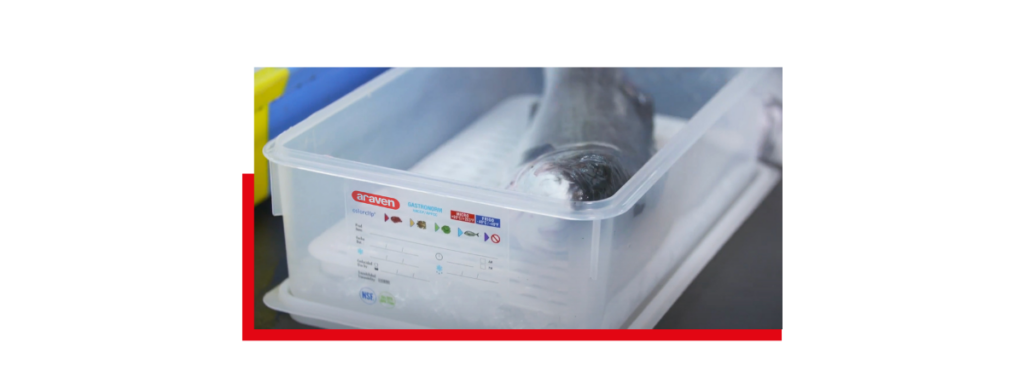
High-rotation fruits and vegetables
Over time, fresh fruits and vegetables with high water content lose moisture that can condense on the walls and the bottom of the container, leading to mould and accelerating the rotting process. Placing perforated grids or trays at the bottom of the containers is recommended to help the air circulate and to prevent water and condensation from accumulating at the bottom.
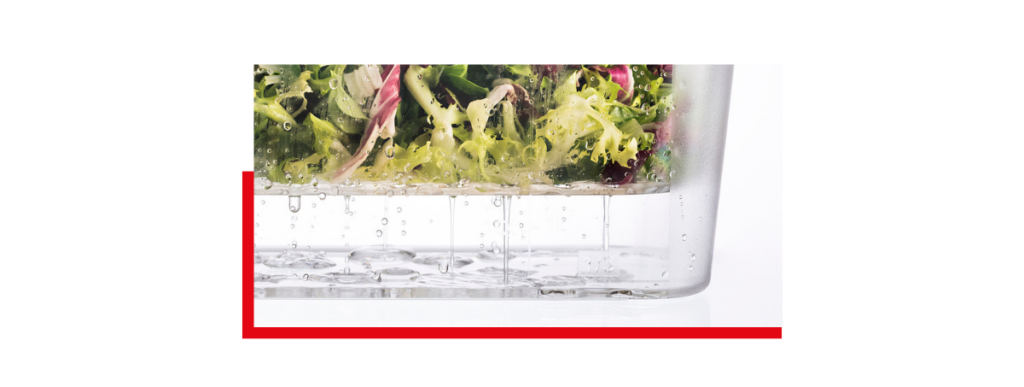
3. Storing and transporting liquids and sauces
We recommend using square containers for storing, carrying and handling liquids, sauces, reductions, etc.
- They’re airtight, which ensures that no liquid spills or leaks out.
- Side handles make for easy handling and carrying

- The container’s square shape delivers enhanced stability during handling.
- Its rounded corners make it easy to pour out the liquid inside.
- The measuring scale helps with managing and monitoring the content.
